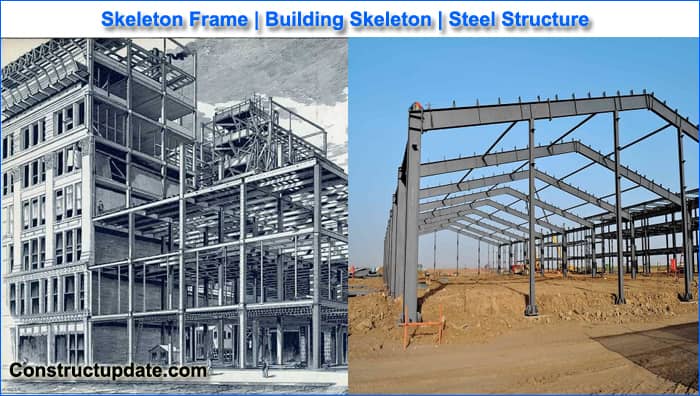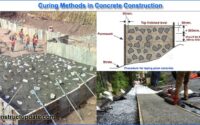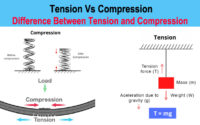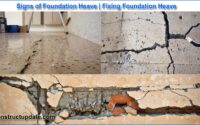What is Skeleton Frame | Building Skeleton | Steel Structure | Components and Advantages
Skeleton Frame
A framed structure known as a “skeleton frame” is frequently utilized to build multi-story buildings. It has a network, or system, of columns and supporting beams that support the interior floors and outside walls while distributing all weights to the structure’s foundations.
Building envelopes can be formed by glazing, brick, cladding, and other materials that are suspended from the exterior of skeleton frames made of wood, concrete, or structural steel components.
In the late 19th and early 20th centuries, the skeleton frame was developed, which facilitated the quick construction of structures like the first skyscrapers. It made it possible for interior floor plans to be devoid of fixed walls, allowing for more flexible spaces. It also allowed for the use of various materials for the façade.
As a result, masonry’s significance as a structural component was diminished in favor of a more ornamental function.
We were able to create interior floor plans without immovable barriers thanks to the use of Skeleton Frame.
This sparked the use of various materials in facade buildings and the creation of more adaptable spaces.
The use of a Skeleton Frame has caused masonry’s significance in civil buildings to decline. Masonry, which was once used as a structural element, has changed into a decorative element as a result of the use of Skeleton frames.

What is Building’s Skeleton:
- A structure constructed using this technique is supported by a steel framework that spans the floors, inner walls, and outer walls.
- The outer walls, whether constructed of desired materials like stone, glass, metal, or aluminum, cannot carry the weight of the building.
- A “building skeleton” is a steel frame that supports massive buildings like skyscrapers.
- Steel girders cross metal beams that form vertical columns to stabilize a building’s framework.
- The basic shapes of buildings are formed where the horizontal beam meets the vertical columns using steel support beams and girders.
- Building skeleton-based builds offer greater advantages than conventional buildings.
What Is Steel Structural Building?
A steel structure building is a particular type of construction made from manufactured metal, primarily steel for both its interior support and exterior material. The level shafts and the upward sections are made of a steel frame, and they are connected by a welding process or tough bolts and bolts. While the upward steel sections are used to handle some of the compressive stress supplied on it, the steel radiates that are placed on a level plane are designed to handle weights that are set on its entrance.
Due to its ability to support heavy loads, this is one of the strongest underpinning structures. Consequently, the steel structure can be used for a variety of purposes in addition to the construction of buildings. They can also be used to build spans and other structures like modern factories and airport terminals.
Steel Frame Construction
Many civil construction projects use steel frame construction because it is a dependable and long-lasting way of building.
For low-rise, mid-rise, and high-rise construction projects, steel frame construction is a relatively affordable and environmentally friendly choice.
Steel frame construction refers to a building frame system where the vertical and horizontal structural elements are formed by a system of structural steel beams and columns.
The American Institute of Steel Construction in the United States and the Canadian Standards Association in Canada have both created standards for steel frame construction that are normally planned, manufactured, and built in line with them.
Components of Skeleton Frame:
- The skeleton’s purlins, columns, posts, bracings, and other components can be produced anywhere there are fabrication facilities.
- A precast R.C.C. base for the column could expedite construction.
- Walls and roofs can be made from a variety of locally accessible materials.
- When a better material is selected, burned brick masonry in cement mortar with an RCC band at the lintel and overhang level may be employed.
- If the stone is readily available, concrete block masonry is preferable to random rubble masonry in mud that adds significant mass and crumbles when subjected to vibrations.
- Additional paneling alternatives include mud walls, adobe walls, reed leaf walls, and bamboo walls.
- Depending on the available materials, roofing can be done with CGI or ACC sheets, thatch, country tiles, or slate.
- Several options for roofing and cladding are affixed to the skeleton structure.
Advantages of Skeleton Frames:
- Depending on the amount of funding available, the system can be created gradually and finished in pieces.
- The most fundamental requirements can be met once the foundation has been constructed, and then other building elements like paneling, flooring, and joinery can be gradually added.
- The lightweight construction of structures built of walling materials like grass, reed, wood, and bamboo makes them earthquake-friendly, but they also have important flaws including quick disintegration and high combustibility due to their organic origins.
- Components have a limited lifespan and need to be replaced right away.
- When making wall panels and thatch roofs, it is crucial to utilize materials that have undergone the necessary seasoning and preservative treatment to increase or modify their workability.





